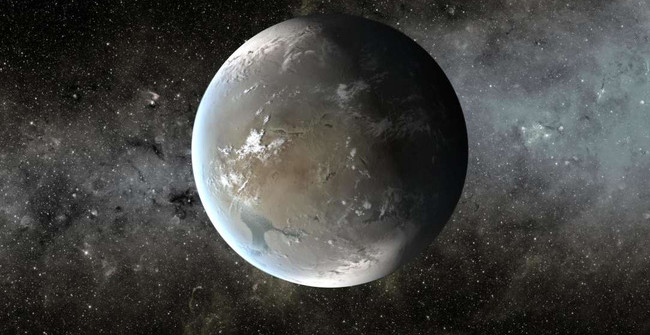The Kepler spacecraft has just one of the most important discoveries in its history
It has been operating since 2009, but recently it can be said that Kepler has had its most important discovery in history.
To complete the journey to find extraterrestrial life, there are 3 criteria that are considered a prerequisite.
First, we have to find a planet of the same size as Earth. Second, it must be close enough. And finally, its orbit must pass through the host star at an angle we can observe, thereby studying the atmospheric composition.
Based on these factors, the newly discovered GJ 9827 star Kepler may be one of the most important discoveries in history.
Accordingly, experts found that three "super-Earths" are revolving around it. The star system - this planet is 98 light-years away from us, and is an excellent candidate to study their atmosphere.

"The first analysis shows that the planetary group of GJ 9827 is excellent candidates for studying the atmosphere, " said Prajwal Niraula from Wesleyan University (USA).
Niraula said, GJ 9827 is a star with about 70% of its size and mass compared to the Sun. Three planets (coded GJ 9827b, c, and d) have a larger size than Earth with 1.75, 1.36 and 2.1 times respectively.
According to previous studies, 1.5 times the size of the Earth is said to be the maximum threshold, before a planet turns into a gas sphere. So these 3 perfect numbers will allow us to observe the changes of planets by size, on the same star system.
These are the nearest planets found by Kepler. In fact, the telescopes produced by telescopes are closer, but mostly determined from light disturbed by gravitational waves. Meanwhile, these 3 new planets come from their passing through the host star in the angle we can observe.
"This is one of the best goals to study atmospheric composition, because light reaching them is relatively clear." - Niraula said.
"At least in the top 5, according to our assessment."
When we see light passing through the atmosphere, we can observe the spectrum, determine the composition, and from there determine what is behind the atmosphere. So far, this is the best method to know the life situation in extraterrestrial planets.

These are the final missions of the Kepler spacecraft.
It is also important to know that GJ 9827b, c and d are more likely to be unable to nourish life, because the distance between them and the host is too close, or too far. But Niraula said it is likely that their atmosphere still reveals a lot of information, just like the solar system Venus.
- NASA planetarium expert broken
- Journey to discover the Kepler spacecraft's
- The Kepler spacecraft finds a new 'super-earth'
- Video: Kepler's space telescope is about to run out of fuel
- Summarize the news 'hot' week 5 July
- Kepler discovered 20 Earth-like planets that could contain life
- Which planets can survive life like Earth?
- Detecting the outer three planets about the size of the Earth
- Detect invisible planet
- Kepler's fireball
- NASA is about to announce new discoveries about extraterrestrial life
- Tonight, NASA may release information about alien life
 Van Allen's belt and evidence that the Apollo 11 mission to the Moon was myth
Van Allen's belt and evidence that the Apollo 11 mission to the Moon was myth The levels of civilization in the universe (Kardashev scale)
The levels of civilization in the universe (Kardashev scale) Today Mars, the sun and the Earth are aligned
Today Mars, the sun and the Earth are aligned The Amazon owner announced a secret plan to build a space base for thousands of people
The Amazon owner announced a secret plan to build a space base for thousands of people